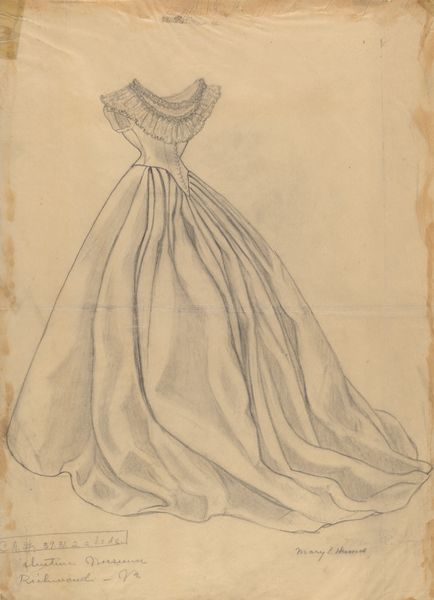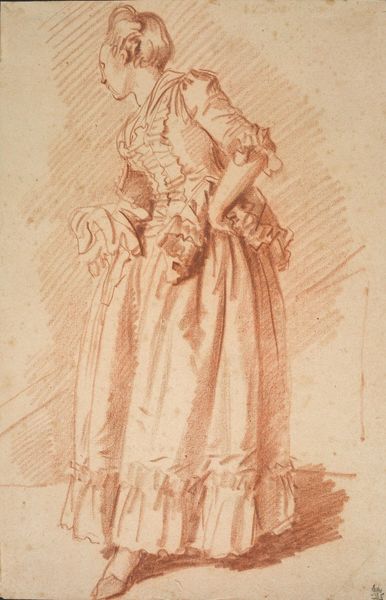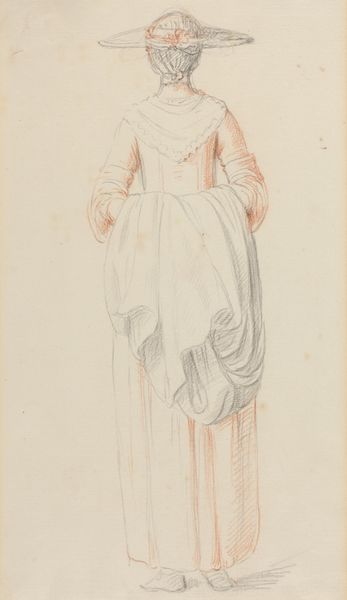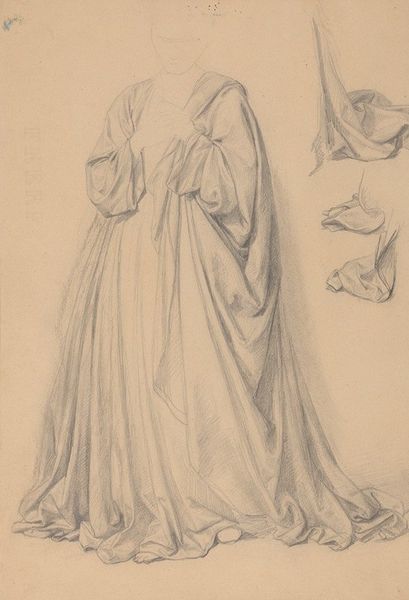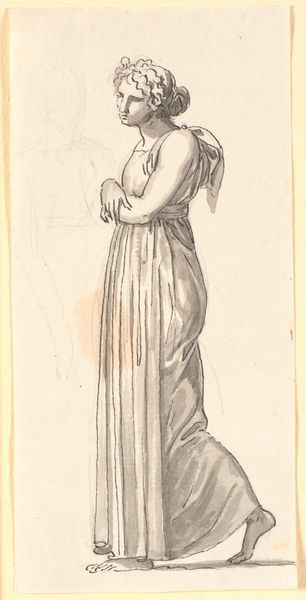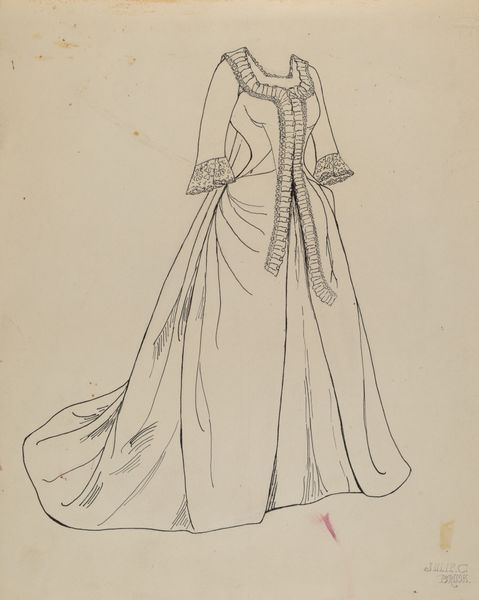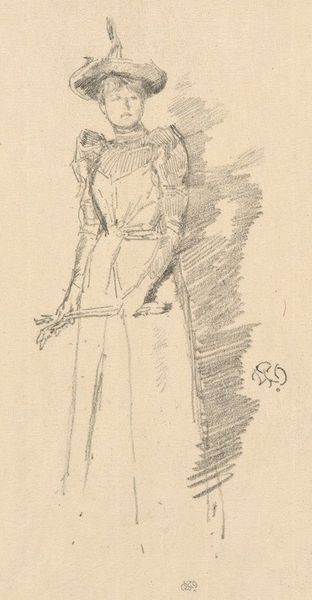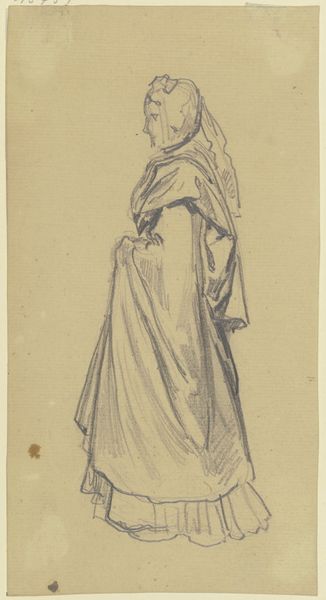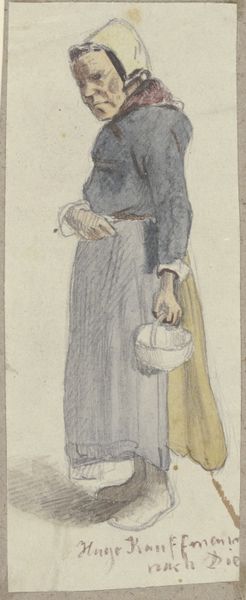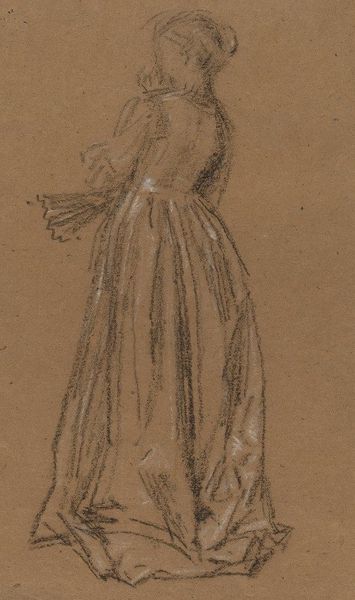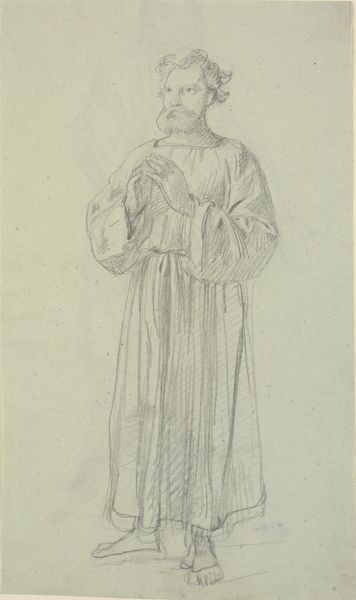
Study of the robe of Bishop Piotr Wysz for the painting ‘Queen Jadwiga’s Oath’ 1867
0:00
0:00
drawing, pencil
#
portrait
#
drawing
#
pencil
#
academic-art
#
realism
Copyright: Public Domain: Artvee
Curator: This compelling pencil drawing is titled "Study of the robe of Bishop Piotr Wysz for the painting ‘Queen Jadwiga’s Oath’," created by Józef Simmler in 1867. It is a preparatory sketch. What strikes you first about this piece? Editor: It has a subdued and tentative quality to it. The pale color, the almost ghostly absence of a face…it feels like a haunting fragment, doesn't it? I see power but also fragility. Curator: Interesting observation. The drawing serves as a material study for the elaborate attire to be worn by a religious figure in his final painting. Simmler's work engages with specific historical and political contexts within 19th-century Poland. His art became deeply intertwined with the nationalist sentiments prevalent in Polish society, particularly during periods of political turmoil and foreign occupation. Editor: Exactly. We have to recognize that clothing is more than simple fabric—it's imbued with social meaning, power, and status. How does Simmler’s drawing challenge or reinforce conventional ways of representing religious figures? Was his intent to subvert expectations or to reinforce them? The rendering of the clothing appears incredibly meticulous—yet there's also something very provisional in its execution. Curator: His engagement with historical events served to promote national identity and preserve cultural heritage in the face of foreign domination. This study could be interpreted as more than just attention to realism, but more as an act of historical accuracy, vital for Polish nation-building in that period. The selection of details conveys the cultural and historical reality that Simmler tried to convey through visual narratives. Editor: Right, so while technically academic in its pursuit of realism and historical detail, this study has the ability to transcend its intended purpose. As viewers, it's our responsibility to understand the context. When considering historical studies, we must interrogate the potential for the romanticization or idealization of specific historical moments or figures, acknowledging potential power imbalances. What is the political project advanced by this idealized study of historical dress? Curator: Well said. The history embedded in garments, particularly within the context of religious or political authority, unveils intriguing layers of social, cultural, and symbolic meaning. This drawing is an invitation to analyze and confront past events while contemplating how we view and interpret historical figures. Editor: Precisely. By questioning, and by continually reflecting, we deepen our relationship to history—and to art itself.
Comments
No comments
Be the first to comment and join the conversation on the ultimate creative platform.
